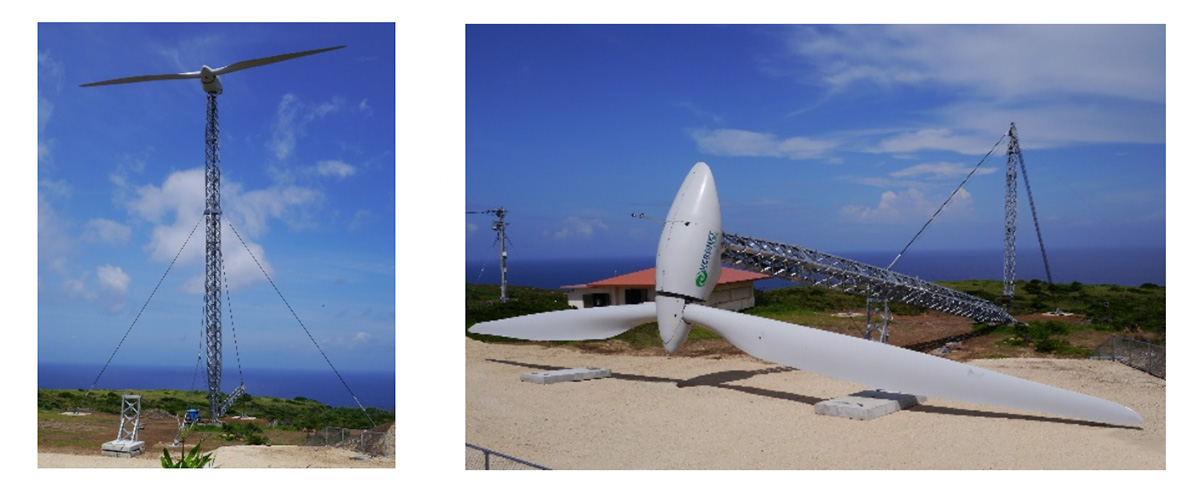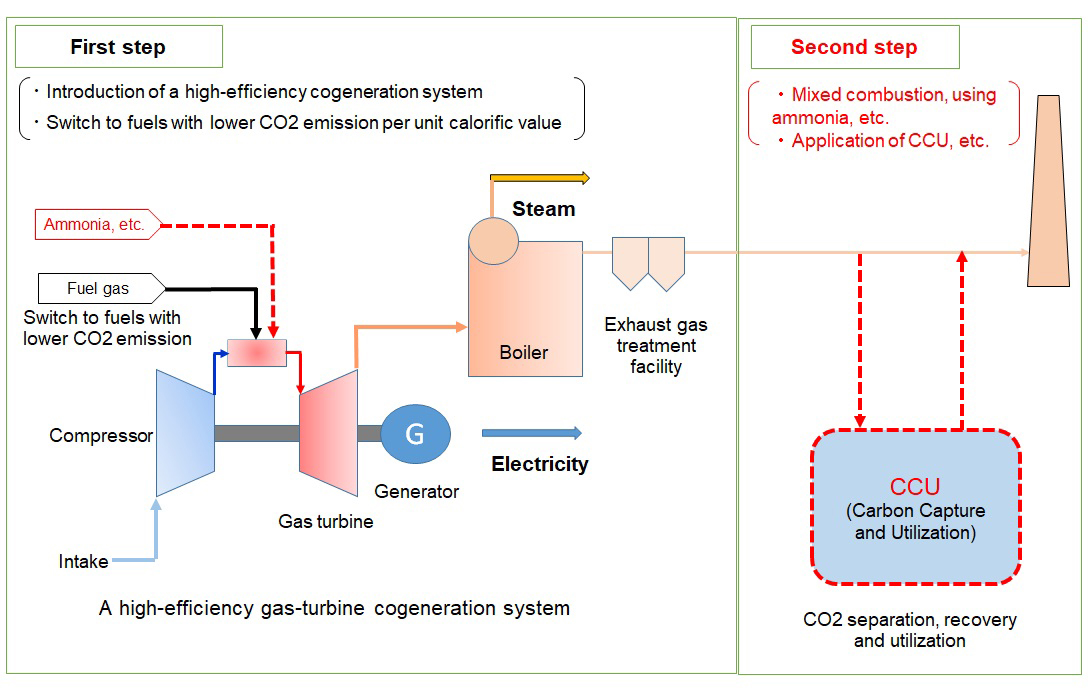The challenge to introduce renewable energy in a small island
The Okinawa Electric Power Co.,Inc.
Outline
In a small island, there are many challenges including the operation of transmission grid, when expanding the effort to introduce renewable energy. One of those challenges is the lower operation limit constraint of diesel generators(DG) as a main power source.
This challenge is derived from the mechanical characteristic of DG, which require the operation of the DG to the output more than 50% of rated output. Thus if the power demand is less than the total output of both renewable energy and the lower operation limit of DG, the output of renewable energy must be restricted.
In order to overcome this issue, introducing the combination of Motor and Generator(MG set), which can be operated with almost same function as DG and without operation limit like DG, could be expected to contribute to enlarge the implmentation of the renewable energy.
Description
[MG set]
The Okinwa Electric Power Co,.Inc supply the power utilizing DGs and tiltable Wind Turbine(WT) in Hateruma island in Okinawa. WT is controlled its output fructuation by the grid stabilizer, and WT has been operated with the output limit because of the operating lower limit restrict of DGs during the low demand season. However, in order to enhance introducing renewable energy, OEPC has proceed the experimental study of MG set with the delegation of the industrial policy devision in Okinawa prefectural government.
MG set is mainly composed of the synchronous generator, the induction motor, the invertor, and battery. Since the motor become the source of drive, there is no the output limit constraint. Besides MG set has same capability of controlling as DG and the alternative operation of DG make it possible to enlarge the output of WT which had been limited.
The characteristic of this system is not only to utilize the output of WT which has been limited but also having the same function as DGs, that is, keeping the frequency, maintaining the voltage and the force of inercia. Besides, the facility has no constraint as to the lower limit of DGs when we attempt to expand introducing the renewable energy, and it is operated on the commercial power grid.
According to the experimental study we did, we have confirmed that 100% of power supply from the renewable power consisted of WT+the MG set could supply for about two hours and the system could be operated stably under the condition that all the DGs were shut down and the power output of WT was from 200kW to 400kW against the power demand of almost 300kW. We are going to checking how to operate this system effectively through the experimental study in the perspective of deploying in other remote islands in the future.
[Basic specification of the MG set]
(1) the synchronous generator
type: Revolving field type synchronous generator
Rated output: 375kVA(power factor 0.8)
Rated voltage: 6,600V
Rated current: 32.8A
No. of poles: 4
Frequenecy:60Hz
RPM: 1,800rpm
Excitation method: Brushless excitation method
(2) the induction motor
Type: Squirrel cage induction motor
Rated output: 330kW
Rated voltage: 260V/340V
Rated current: 850A/650A
No. of poles: 4
Frequenecy: 60Hz
[Main system control function]
1. Governor-Free operation
2. Automatic Voltage Regulator(AVR)
3. Automatic Reactive Power Regulator, Automatic Power Actor Regulator(AQR/APFR)
Partner(s)
The industrial policy devision in Okinawa prefectural government
Supplementary information
The enhancement of the global environment measurement, Environment report, from OEPC website(Japanese)
http://www.okiden.co.jp/environment/report2019/sec3/sec33.html
Other Innovation Challenges
Introducing wind power in island areas where typhoons frequently hit and Adaptation to stronger typhoons
The Okinawa Electric Power Co.,Inc.
Similar Innovation Challenges
Achieve 2050 decarbonization target with Net Zero Energy House!
Sekisui House, Ltd.
Achieving net-zero emissions by promoting renewable energy use through both our monozukuri and products.
DAIWA HOUSE INDUSTRY CO., LTD.








